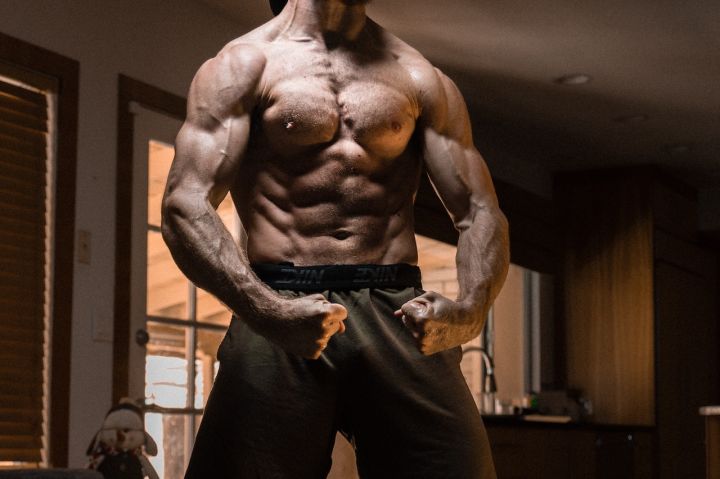a kettlebell is a cast iron or cast steel ball with a handle at the top (similar to a cannonball with a handle). It is used to perform many types of exercise and it is an effective way to improve cardio, strength and flexibility training.

They are also the main equipment used in kettlebell weightlifting competitions.

first used in russia as a metal weight standard, they were mainly used in the 18th century to measure the weight of crops in a similar way to weights. Later it appeared in circuses, and the use of such weights dates back to the 19th century.

the english word kettle bell has been in use since the early 20th century.

a similar weighted instrument used in classical greece was comparable to the modern kettlebell in terms of exercise. Another similar object was used by shaolin monks in china, and may also refer to the similar stone locks now used by chinese folk.

unlike traditional dumbbells, kettlebells are held above the grip, which facilitates movement and swinging. Kettlebell variants include bags filled with sand, water or steel balls. Kettlebells allow for swinging movements and relaxation movements for added safety, strengthening for grip, wrists, arms and core. Kettlebells are available in different weights so that each person can choose to use them according to their ability. In addition the unique shape of the kettlebell provides effectiveness in kettlebell exercises.


beginner kettlebell exercises are a great way to add variety to your workout routine, and there are countless ways to burn your body with versatile kettlebells (while raising your heart rate to promote heart exercise).
Firstly, you will need a 2 to 6kg kettlebell. If you have experience with kettlebells, you choose a heavier weight.

complete the training movements below by doing 1-3 and then repeating for 3 sets. These improve stability. Then, concentrate on challenging your muscles with moves 4 and 5 (3 repetitions). Finish with 6 and 7 (3 repetitions), which will raise your heart rate for an extra workout!
Get your kettlebells ready and start now.
1. Lunge kettlebell around the head

hold the kettlebell with the reverse grip down, gripping the sides of the kettlebell handle and keeping it at the same height as your chest. Take a large step forward with your right leg so that your feet are staggered and your knees are bent. Raise the kettlebell to eye level and slowly rotate it around your head to the left. As you go, let the ball fall under the handle and when you have completed a rotation, put it back in place. Return to the starting position and circle the kettlebell to the right. Repeat 5 times. Then repeat with the other leg forward. Exercise areas:
Shoulders, legs
2. Lunge push-up

hold the kettlebell handle in your left hand and extend your arm over your shoulder with the ball resting on the back of your wrist. Bring your left foot back in a reverse lunge to step forward back to the starting position. 10 reps per set. Repeat on the other side. Exercise areas:
Shoulders, abs, legs
3. Kettlebell row

hold the kettlebell handle in your right hand and hang your arms at your sides. Step with your left foot in front of your right foot to form a lunge. Bend at the waist so that the torso is at a 45 degree angle to the floor, keeping the spine straight. Pull the kettlebell up to your chest. Pause and slowly lower it down. 15 reps per set. Repeat on the other side. Exercise areas:
Upper back, shoulders, biceps, abdominals
4、kettlebell push-ups

stand with your feet hip-width apart. Hold the kettlebell handle in your left hand at shoulder height and place the ball on the back of your wrist. Squat, then stand up while pushing upwards on the kettlebell overhead (as shown). Return to the starting position. 10 sets of 10 each. Repeat on the other side. Exercise areas:
Shoulders, triceps, abs, legs
5. Squats and curls

stand with your feet shoulder-width apart, toes out at a 45 degree angle, and hold the sides of the kettlebell handles with both hands at chest height. Squat down until your thighs are parallel to the floor, then do a bicep curl. Return to a standing position through the heels. Do two deep squats on the next round, with 2 bicep curls at the bottom of the second squat. Add one each time, and on the last rep you do 5 deep squats and 5 bicep curls. Exercise areas:
Biceps, upper back, abs, legs
6. Kettlebell swings

with feet shoulder-width apart, hold the top of the kettlebell handles with both hands.
Slightly bend your knees and then bend at the hips to allow the kettlebell to swing between your legs.
Stand up as you swing to chest height.
20 reps per set.
Exercise areas:
Abs, gluteus maximus, hamstrings
7. Triceps curls

hold the kettlebell at the bottom of the handle with both hands. Keep your feet shoulder-width apart and knees slightly bent.
Raise the kettlebell directly overhead.
Bring your elbows close to your ears and lower the kettlebell from behind your head to your neck. Pause, then straighten your arms and lift the kettlebell overhead.
10 per set.
Exercise areas:
Triceps, shoulders, abdominals
keep trying more and more difficult kettlebell training movements as you improve your physical ability.

